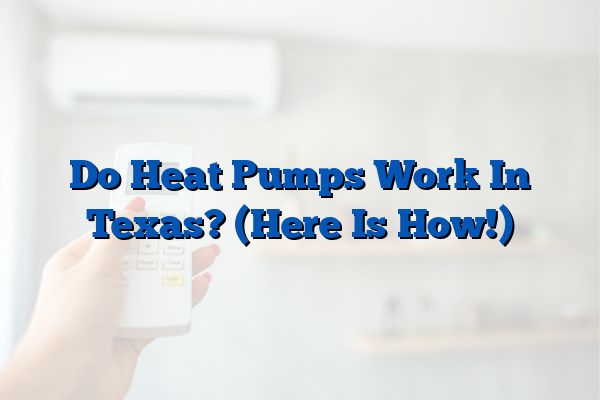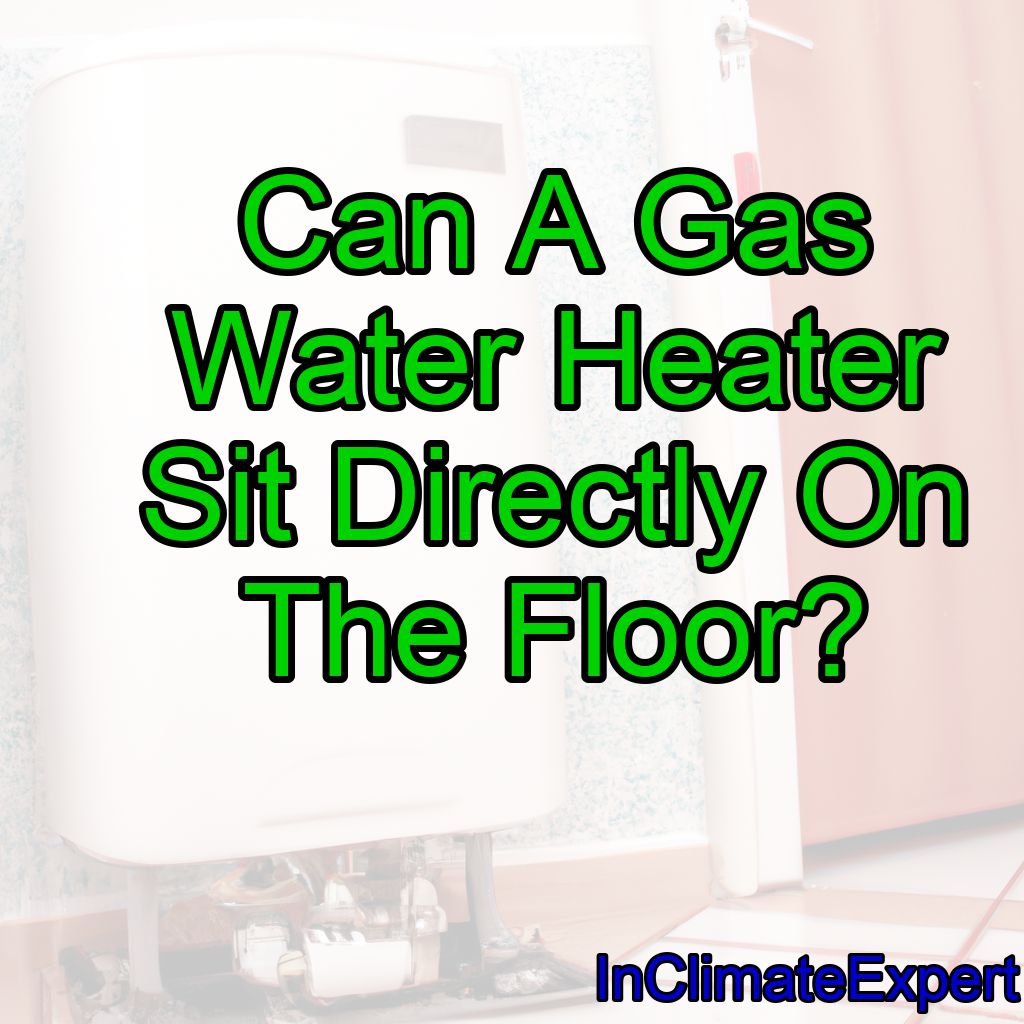Heat pumps are a great way to both heat and cool your home without breaking the bank. They provide consistent temperatures throughout your house, all while using less energy than other types of heating and cooling systems.
But do they really work in Texas? With its hot summers and mild winters, can a heat pump handle it?
As an expert on heat pumps, I’m here to tell you that yes, they absolutely work in Texas!
Heat pumps use electricity to move air from one place to another – either into or out of your home depending on whether it’s summer or winter time. This means that no matter what season it is, you get year-round comfort for an affordable price.
Plus, since there’s no combustion involved with heat pumps like there is with furnaces, they’re safer inside your home as well.
In order to make sure that you select the best system for your needs though, you need to understand how different climates affect their performance. That’s why we’ll be exploring if heat pumps work in Texas – so you can rest assured knowing that yours will operate correctly when installed properly.
So keep reading to find out more about how this type of HVAC system works in the Lone Star State!
Overview Of Climate In Texas
Texas is a diverse state with incredibly varied climates. Generally, the northern and western parts of Texas are more prone to cold weather than the southern and eastern sections.
This can make it difficult for homeowners in these areas to keep their homes comfortable year-round without an effective heating system. Thankfully, heat pumps offer efficient solutions that can work well even in colder regions like those found in Texas.
Average yearly temperatures range from 60°F (16°C) to 80°F (27°C). However, during winter months temperatures can drop as low as 20°F (-7°C), while summer highs often reach 100°F (38°C).
These wide swings between hot and cold mean that any viable HVAC solution must be able to handle both extremes efficiently. Fortunately, modern advances in technology allow heat pumps to do just that with minimal energy usage and cost savings compared to other systems.
In addition, most parts of Texas enjoy a high amount of sunshine throughout the year. Solar panels tied into a heat pump system can take advantage of this free source of energy which helps reduce operational expenses over time.
With all these factors taken into account, it’s clear why heat pumps are becoming increasingly popular options for Texan households looking for reliable climate control. Now let’s look at what types of heat pumps would work best in various parts of Texas…
Types Of Heat Pumps Suitable For Texas
Texas is a hot and humid state, so it’s no surprise that heat pumps are an ideal choice of heating and cooling system for many homes. As any experienced heat pump expert knows, the right type of heat pump can make all the difference in terms of efficiency and cost savings.
Let’s take a look at some types of heat pumps suitable for Texas climates.
The first type of heat pump we’ll consider is the air-source, or split system, which uses outdoor coils to absorb heat from outside air, then transfers that energy indoors. This type works best when temperatures remain above freezing year-round; otherwise, you may need to install a supplemental electric heater to ensure your home remains comfortable during cold spells.
The second type of heat pump is the ground source (or geothermal) unit, which extracts thermal energy from deep within underground soil or water sources and circulates it into your living space. These systems require very little electricity to operate – making them one of the most efficient choices available – but their hefty price tag makes them out of reach for many homeowners.
With a better understanding of these two common types of heat pumps, homeowners will be able to determine if they’re a good fit for their climate and budget needs. Now let’s explore the advantages and disadvantages associated with each option before deciding on what kind might work best in Texas.
Advantages And Disadvantages Of Heat Pumps In Texas
Heat pumps are a great option for Texas residents seeking an energy efficient way to cool and heat their homes. They offer numerous advantages, such as not requiring any backup heating source, operating quietly and efficiently, and providing consistent temperatures throughout the home.
Additionally, they can be used both in cooling mode during summer months and in heating mode during cooler weather.
However, there are some drawbacks to using a heat pump in Texas. The biggest disadvantage is that it will struggle more than other methods when outside temperatures become very cold or hot.
This means that if you live somewhere with extreme temperature shifts from season to season, your heat pump could malfunction or even break down entirely due to the strain caused by trying to keep up with those changes. Another potential downside is that the initial cost of installation may be higher compared to other options.
Overall, while there may be some issues associated with using a heat pump in Texas, its efficiency combined with minimal maintenance costs make it an attractive choice for many homeowners looking for an effective climate control solution. With proper care and attention given to upkeep needs like filter replacement and refrigerant levels, these systems often last quite a long time before needing repairs or replacements – meaning fewer headaches over time! Moving on now to examining the cost-benefit analysis of installing a heat pump system in Texas… …it is important to consider the long-term savings from energy efficiency as well as the potential for lower utility bills.
Cost-Benefit Analysis Of Heat Pumps In Texas
When it comes to the cost-benefit analysis of heat pumps in Texas, homeowners must consider several factors. First and foremost is the climate – with temperatures often reaching well into the 90s during summer months, a reliable cooling system is essential for keeping homes comfortable.
Additionally, many Texans are looking for ways to reduce their electricity bill while still staying cool. Heat pumps offer an energy efficient solution that can help save money on monthly utility bills.
The benefits of installing a heat pump in Texas go beyond just cost savings. For example, because they use existing air from outside rather than creating new heated or cooled air like traditional systems do, they cut down on emissions and improve indoor air quality by filtering out pollutants and allergens.
Furthermore, since they don’t require any ductwork installation like central AC units do, they’re generally easier and less expensive to install.
Here are some key points to consider when evaluating whether a heat pump is right for you:
•Installation costs may be lower than those associated with other types of HVAC systems;
•Heat pumps may provide better overall efficiency compared to traditional heating/cooling systems;
•They don’t require any additional ductwork;
•Heat pumps can filter out allergens and pollutants from the inside air;
•With regular maintenance, these systems have a life expectancy of 15–20 years.
Ultimately, the decision about whether or not to invest in a heat pump depends on your individual needs as well as your budget. While there may be upfront expenses associated with purchasing and installing such equipment, long-term benefits could include improved comfort levels as well as significant energy savings over time – making the investment worthwhile!
Conclusion
In conclusion, heat pumps are a great solution to keeping your home cool in the hot Texas climate. They offer an efficient and cost-effective way to regulate temperatures throughout the year.
Heat pumps can be used for both heating and cooling, making them highly versatile options for any home or business owner looking for energy savings in their air conditioning needs.
The advantages of heat pumps include improved efficiency over traditional HVAC systems, low maintenance costs, no need for ductwork installation, as well as quieter operation due to fewer moving parts. The only major disadvantage is that they may not always be able to keep up with extreme weather conditions such as during Texas summers when temperatures regularly reach triple digits.
My recommendation? Heat pumps are definitely worth considering if you’re looking for an economical way to stay comfortable all year round without breaking the bank.
With proper maintenance and use of supplemental cooling methods like fans and window AC units during extremely hot days, I’m confident you’ll find that investing in a heat pump will pay off handsomely over time!




